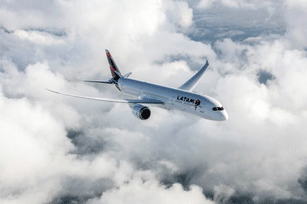LATAM Airlines Perú Cancels Lima-La Habana Route Due to TUUA Fee: A Comprehensive Analysis
In a significant development in the aviation industry, LATAM Airlines Perú has announced the permanent cancellation of its Lima-La Habana route, effective March 11, 2026. This decision comes after more than 23 months of operation, during which the airline transported nearly 110,000 passengers between Peru and the Cuban capital. According to LATAM, the route’s financial performance has been severely impacted by the new Transfer Unified Airport Usage Fee (TUUA), making it unsustainable.
The Impact of TUUA on the Route
The TUUA fee imposed by Lima Airport Partners (LAP) is the primary reason behind the cancellation. This additional cost will significantly affect passengers in international connections, who make up approximately 70% of travelers on this route. LATAM fears that many passengers will opt for other regional hubs without such fees, reducing the route’s competitiveness. The airline’s concerns are valid, given the highly competitive nature of the aviation industry and the ease with which passengers can choose alternative routes or airlines.
The Financial Implications
The financial implications of the TUUA fee cannot be overstated. With the additional cost, the route becomes economically unviable for LATAM Airlines Perú. The airline has emphasized that the fee will not only affect its bottom line but also impact passengers who will have to bear the brunt of the increased costs. In a market where price sensitivity is high, the imposition of additional fees can be a significant deterrent for passengers.
Alternatives for Affected Passengers
LATAM Airlines has expressed its commitment to finding solutions for passengers affected by the cancellation. The airline is offering the following alternatives:
- Advance Travel Arrangements: LATAM is willing to work with passengers to make advance travel arrangements, ensuring that they reach their destination with minimal disruption.
- Full Refund of the Ticket: Passengers who prefer not to travel can opt for a full refund of their ticket, providing them with the flexibility to make alternative travel plans.
- Alternative Protection Options: For passengers who wish to maintain their itinerary, LATAM will offer alternative protection options with other operators, ensuring that they can still reach their destination.
Industry Implications
The cancellation of the Lima-La Habana route highlights the challenges faced by airlines operating in a competitive market with increasing costs. It also underscores the importance of regulatory frameworks that support the aviation industry’s growth and sustainability. The aviation industry is a significant contributor to the economy, and any disruption can have far-reaching consequences.
The Role of Regulation
The role of regulation in the aviation industry cannot be overstated. Regulatory frameworks can either support or hinder the growth of the industry. In this case, the imposition of the TUUA fee has had a significant impact on LATAM Airlines Perú’s operations. The airline’s decision to cancel the route is a direct result of the increased costs associated with the fee.
Conclusion
The cancellation of LATAM’s Lima-La Habana route is a significant development in the aviation industry. As the airline sector continues to evolve, it will be crucial for airlines, regulators, and airport authorities to work together to find solutions that balance economic sustainability with passenger needs. In the meantime, affected passengers will need to explore alternative travel options.
Key Takeaways
- Route Cancellation: LATAM Airlines Perú is canceling its Lima-La Habana route due to the financial impact of the TUUA fee.
- Passenger Impact: The airline is offering alternatives to affected passengers, including advance travel arrangements and refunds.
- Industry Implications: The cancellation highlights the challenges faced by airlines in a competitive market with rising costs.
- Regulatory Frameworks: The importance of regulatory frameworks that support the aviation industry’s growth and sustainability is underscored.
In conclusion, the cancellation of the Lima-La Habana route is a significant development in the aviation industry. It highlights the challenges faced by airlines operating in a competitive market with increasing costs. As the industry continues to evolve, it will be crucial for airlines, regulators, and airport authorities to work together to find solutions that balance economic sustainability with passenger needs.
Tips for Choosing the Right Airline Insurance
When traveling by air, it’s essential to consider purchasing airline insurance to protect yourself against unforeseen circumstances. Here are some tips to help you choose the right airline insurance:
- Understand the Coverage: Make sure you understand what is covered and what is not. Look for policies that cover trip cancellations, interruptions, and delays, as well as medical emergencies and lost or stolen luggage.
- Assess Your Needs: Consider your individual needs and circumstances. If you have a pre-existing medical condition, look for policies that cover medical emergencies related to that condition.
- Compare Policies: Compare policies from different insurance providers to find the one that best suits your needs and budget. Look for policies with high coverage limits and low deductibles.
- Read the Fine Print: Carefully read the policy’s terms and conditions to understand the exclusions and limitations.
- Check the Insurer’s Reputation: Research the insurer’s reputation and financial stability to ensure they can pay out claims.
- Consider Annual Policies: If you’re a frequent traveler, consider purchasing an annual policy that covers multiple trips.
- Don’t Overbuy: Don’t purchase more coverage than you need. Consider your trip details and plan accordingly.
- Keep Documents Safe: Keep your policy documents and emergency contact information safe and easily accessible.
Types of Airline Insurance
- Trip Cancellation Insurance: Covers trip cancellations due to unforeseen circumstances.
- Trip Interruption Insurance: Covers trip interruptions due to unforeseen circumstances.
- Travel Medical Insurance: Covers medical emergencies while traveling.
- Lost or Stolen Luggage Insurance: Covers lost or stolen luggage.
Benefits of Airline Insurance
- Financial Protection: Airline insurance provides financial protection against unforeseen circumstances.
- Peace of Mind: Knowing you’re covered can give you peace of mind while traveling.
- Assistance with Claims: Many insurers offer assistance with claims, making the process easier for you.
By following these tips, you can choose the right airline insurance for your needs and enjoy your trip with peace of mind.







